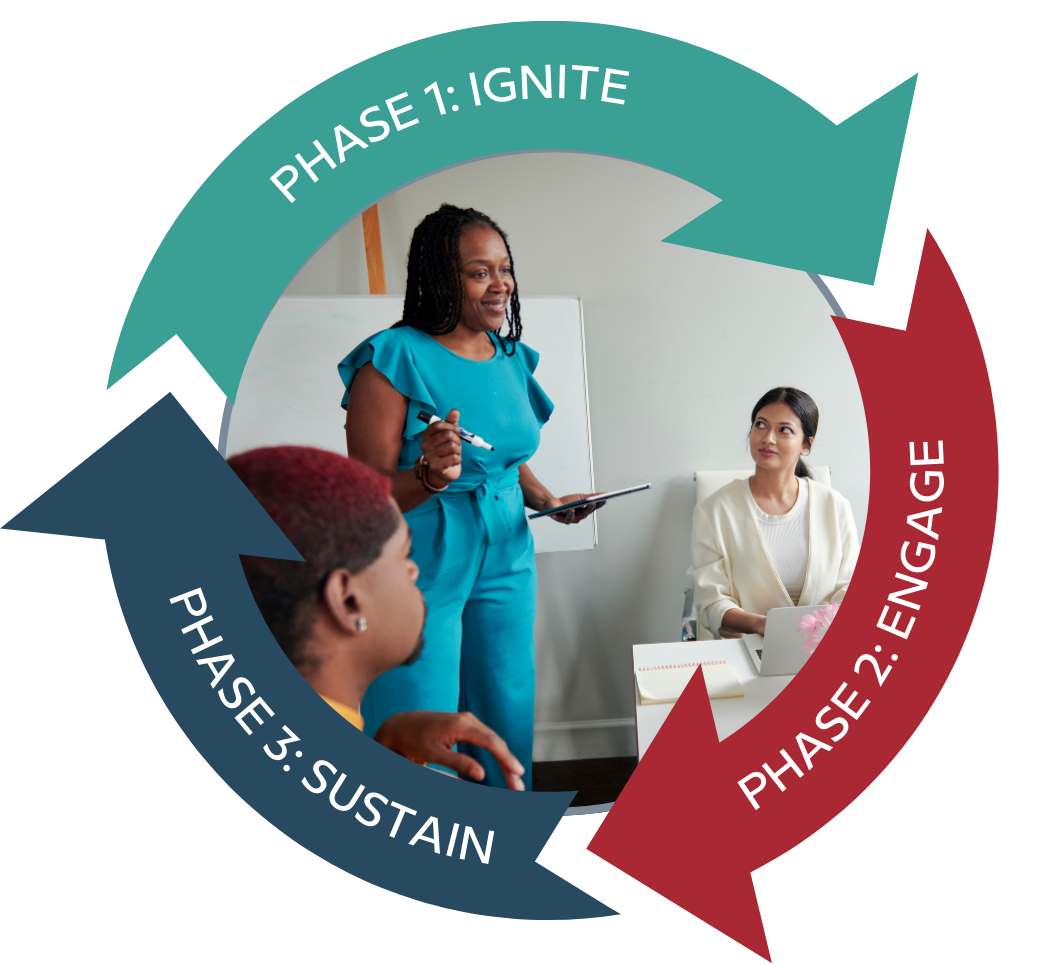
Three Phases
Change Process Timeline
Standard School Partnership: 12 Months
| Change Process Phase | Time of Year | Key Activities | Coaching | Professional Development / Community Education |
|---|---|---|---|---|
| Phase 1: Ignite | August-October | Assemble Team Administer Surveys Define Focus Area | Coaching Session #1 Coaching Session #2 | Attend Conference at Stanford Workshop #1 |
| Phase 2: Engage | November-March | Co-Design and Test Change Ideas in Continuous Improvement Cycles | On-Site Visit Day Coaching Session #3 Coaching Session #4 | Workshop #2 Workshop #3 |
| Phase 2 and/or Phase 3: Engage and/or Sustain | April-June | Reflect on Progress Attend Spring Convening Plan for the Future | Coaching Session #5 |
Extended School Partnership: 18 Months
| Change Process Phase | Time of Year | Key Activities | Coaching | Professional Development / Community Education |
|---|---|---|---|---|
| Phase 1: Ignite | January-June | Assemble Team Administer Surveys Define Focus Area | Coaching Session #1 On-Site Visit Day #1 Coaching Session #2 | Workshop #1 |
| Phase 1: Ignite | July-October | Co-Design and Test Change Ideas in Continuous Improvement Cycles | Coaching Session #3 Coaching Session #4 | Attend Conference at Stanford Workshop #2 |
| Phase 2: Engage | November-March | Reflect on Progress Continuous Improvement Cycles | On-Site Visit Day #2 Coaching Session #5 Coaching Session #6 | Workshop #3 |
| Phase 2 and/or Phase 3: Engage and/or Sustain | April-June | Attend Spring Convening Plan for the Future | Coaching Session #7 Coaching Session #8 |
